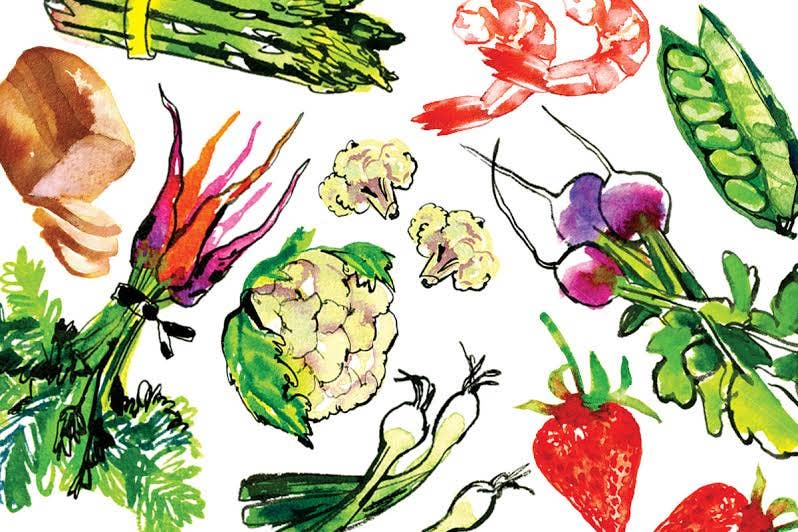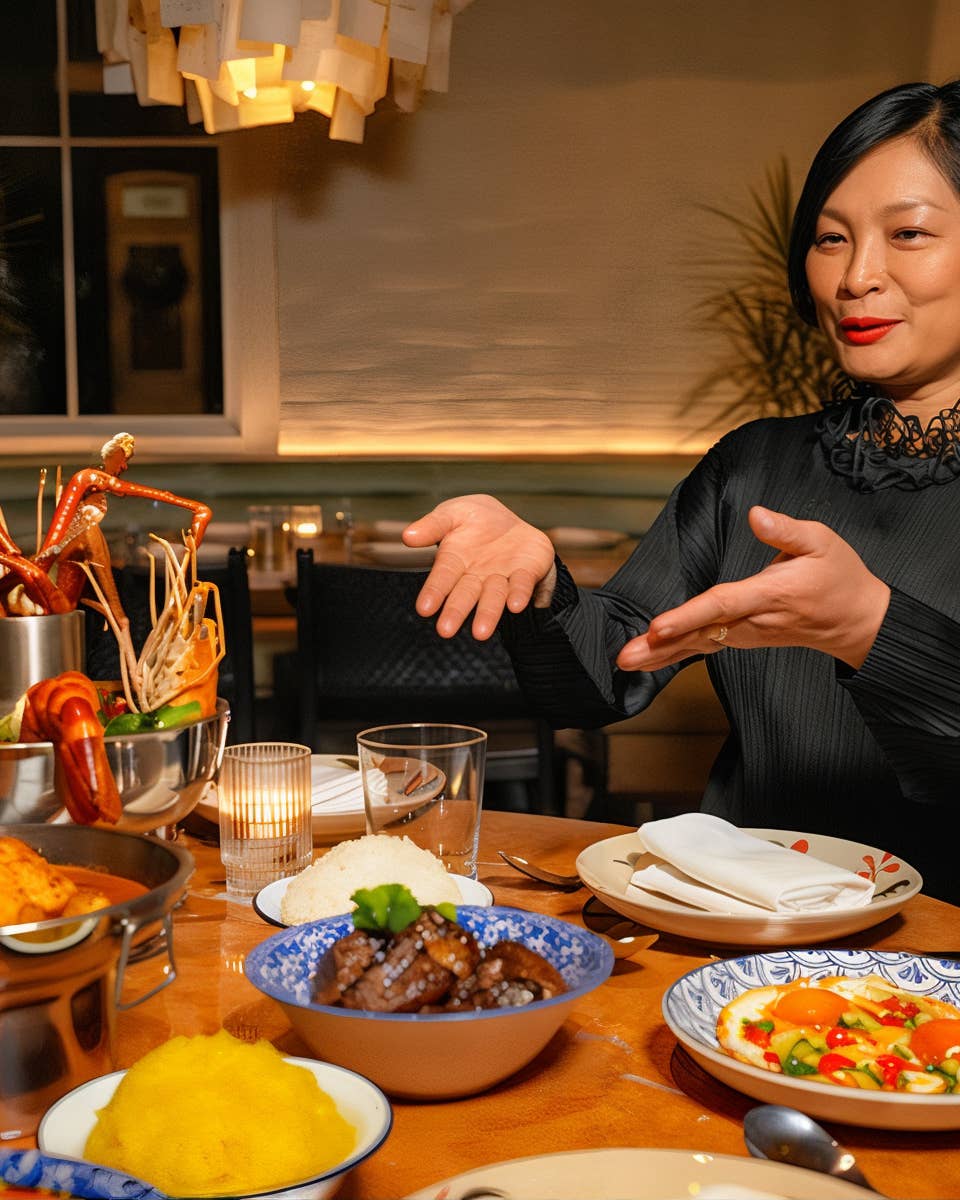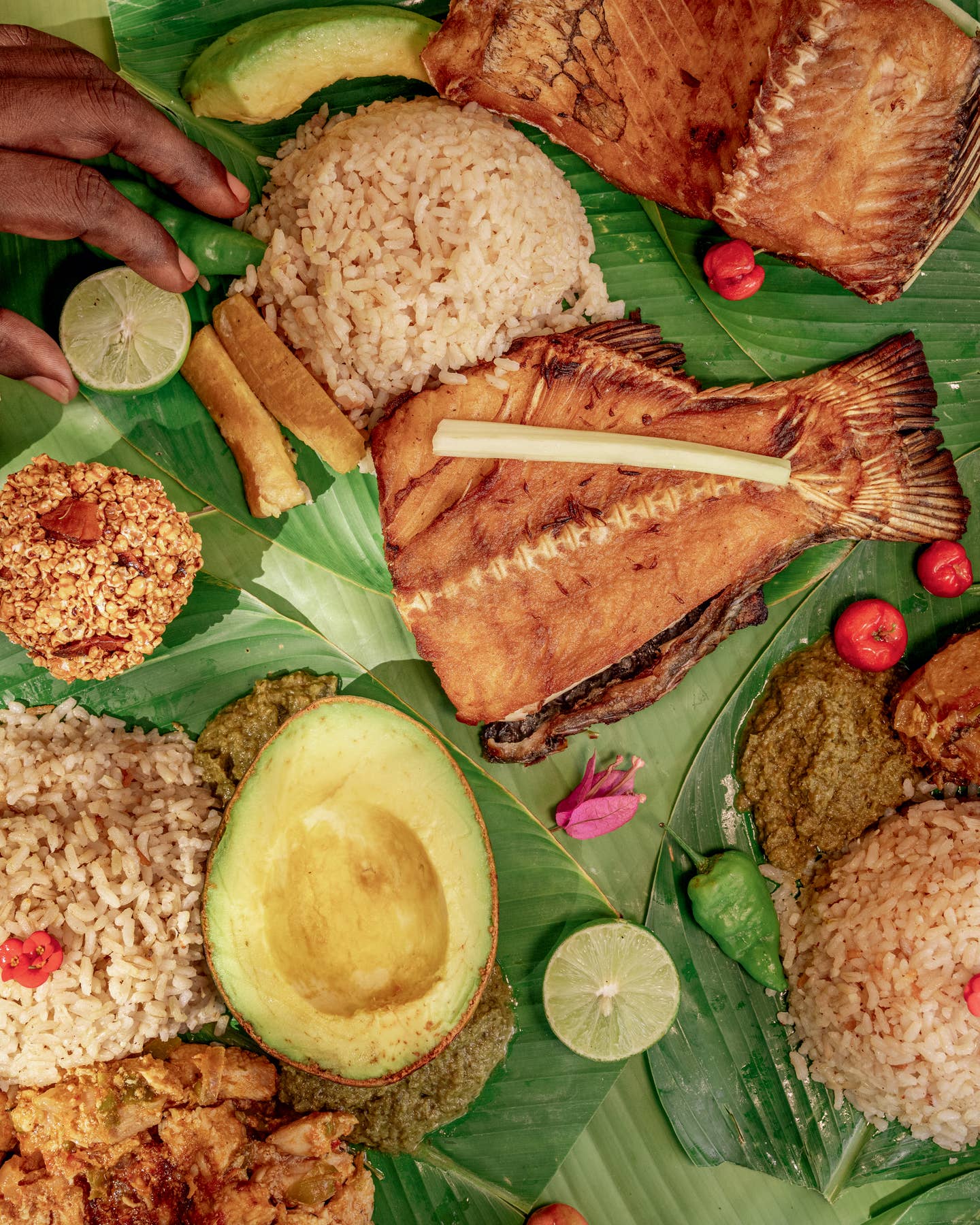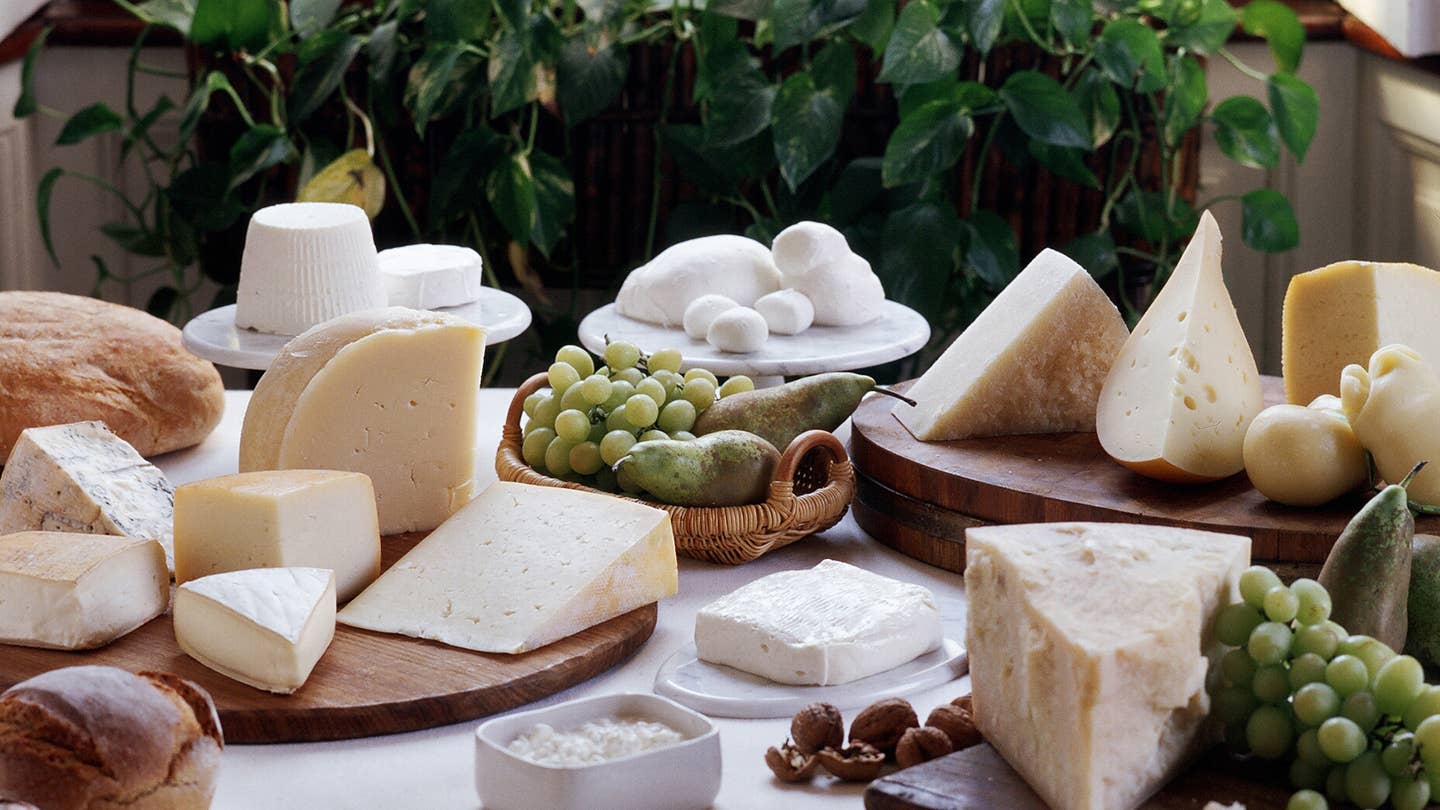
Last Dinners in the Old Hong Kong
For the past 25 years, I've traveled to Asia once or twice a year, usually to do historical research in Japan. In 1985, I paid my first visit to Hong Kong, and I've been going there regularly ever since. It's my reward to myself. I love the city—the lights rippling on the water, the breeze on the upper deck of the Star Ferry at dusk, the early mornings, calm and cool, in Victoria Park. I'm now mildly addicted to Chinese tea and I've gotten to know the small, brightly lit shops where you can buy stone-ware teapots the size of lemons or elegant German leather goods. And, it almost goes without saying, I've developed a serious passion for Hong Kong's food.
Hong Kong is a rich city, and one obsessed with the new, the exotic, the rare, and the expensive—a combination that gives it a food culture unlike that of anyplace else on earth. In China, no city has the resources to attract so many talented chefs from every region, and thus no other city can offer such a wide representation of Chinese cuisines—although in Hong Kong, these are adapted to local tastes, which means that they're usually lighter, healthier, and more sophisticated. Hong Kong is a city that eats out, and the options range from street stalls to chic hotel restaurants (like the Mandarin Oriental's Man Wah or the Regent's Lai Ching Heen) and exclusive private clubs. Money, of course, is usually no object. It is not unheard of, for example, to spend $60 on a bowl of shark's-fin soup, $650 on a single dish of abalone, or upwards of $10,000 on a dinner for 12 people—not including drinks.
Most likely, none of this will change after Handover, the official reversion of Hong Kong to Chinese rule at midnight on June 30. There are rumors to the contrary, of course. Some say that an influx of Chinese government officials from the north will inspire a demand for their favored style of cooking—heavy, oily, and salty. Tony Clifton, a Newsweek correspondent who reported on Hong Kong for 27 years and is a great lover of the city's food scene, predicts that "the most expensive local restaurants will actually boom, as Hong Kongers try to ingratiate themselves" with the new bureaucracy in the best way they know how—at the table.
In any case, on my own last trip to Hong Kong before Handover, I wanted to fix in my mind the city I've loved for so long by sampling some of my favorite dishes in some of my favorite restaurants. Rumors and predictions aside, nobody really knows what the change is going to mean to the city—and I didn't want to take any chances.
Since the overwhelming majority of Hong Kong's ethnic Chinese population claim Cantonese ancestry, it seemed only logical to start my gastronomic tour with Cantonese food, the most common in the city. The hallmark of this cuisine is its delicacy. Cooking methods are quick. Potent spices, strong condiments, and hot chiles are left to the other regions—or set on the table to be added judiciously by the diner. The Cantonese rely greatly on "superior soup", a luxurious all-purpose stock made from chicken, pork, and musky Jinhua ham, and they have a special affinity for anything from the sea. Some of the most expensive (and thus appreciated) seafood is dried—shark's fins, scallops, abalone, and sea cucumbers (flat, spiny, sluglike creatures)—all of which are prized for their unusual texture.
The Cantonese are also very particular about fresh seafood. They expect fish to have been throbbing with life only minutes before it is slipped onto a plate—that's why tanks full of live fish are a common fixture in the city's restaurants. At Spring Moon, the Cantonese restaurant in the Peninsula Hotel, for instance, as I enjoyed my dim sum, a somei (a tropical wrasse) was scooped from the dining-room aquarium for me and taken into the kitchen. There, chef Ho Pui Yung steamed it to perfection. The fish reappeared in minutes, its white flesh moist and firm but easily yielding to my probing chopsticks. An equally amazing pigeon dish followed: The dark, livery flavor of the bird was offset by the fruity undertones of a marinade. The menu lists the dish as "roast pigeon flavored with cinnamon", but it is actually flavored with gwei fa, the flower of cassia, a near relative of cinnamon.
I enjoyed another intensely satisfying meal at Dynasty, a restaurant in the New World Hotel. Dynasty's cream-colored walls, rosewood accents, and sunny glimpses of the greenery outside give it an airy, relaxed quality not usually found in the heart of Kowloon's built-up Tsimshatsui district. Dynasty's food may be based on the home cooking of Shuntak (Shunde) and other townships along the Pearl River, but in the best Hong Kong spirit, chef Tam Sek Lun improvises, combining humble foods like bean curd and squash with such luxurious ingredients as dried seafood and mushrooms. His dishes are elevated to a higher plane—including those with rice, which in this cuisine is eaten during practically every meal. I chose one of the more refined of Tam's 11 clay-pot rice dishes: a heady mix of rice, black mushrooms, preserved jia choi (a vegetable similar to mustard greens), and conpoy (a type of dried scallop). On the side came two small pitchers, one containing dark soy sauce, the other—as surprising as it may sound—golden melted lard. I drizzled them both into my pot, and I was nearly overwhelmed (in a good way) by the blended fragrances.
While I was enjoying the rice, two more dishes appeared. In one, sweet pieces of hairy squash (like a cross between a melon and a squash) were braised with straw mushrooms, pungent dried shrimp roe, fish maw (a bladderlike organ), conpoy, and sea cucumber. The other was a plate of sliced pork belly (fresh bacon), coated with a piquant mixture of preserved shrimp paste, fresh chiles, and fresh ginger, and then steamed. The squash dish was delicate, its flavors fragile; the pork was hearty, strong, not for the fainthearted. They worked wonderfully together.
Chiu Chow (Chaozhou in Mandarin), a town in the northeastern region of Canton (Guangdong) province, is home to a rich peasant cuisine that has recently become quite popular in Hong Kong. This cooking starts with the natural flavors of fresh fish, seafood, and poultry, but combines them with intensely flavored condiments and preserved ingredients—including lemons, olives, shrimp paste, oil-based chile sauce, salted fish, and tangerine sauce. Lard appears in this cuisine as well, again to be added, sometimes in shockingly generous amounts, to enrich various dishes.
At Golden Island Bird's Nest Chiu Chau [sic] Restaurant, one of the Chiu Chow establishments that caters to a sophisticated clientele, chef Ng Muk Hing has reinterpreted this earthy cuisine. I love eel in any form, but Ng's, steamed, with a salted-plum sauce, is particularly delicious—and light. Ng's duck soup flavored with salt-preserved lemons works the same way, cutting the fat with a mixture of salty and sour. I ordered a classic regional dessert: mashed taro blended with peanut oil (a Hong Kong refinement; lard is used in Chiu Chow), and studded with bitterish ginkgo nuts. It was perfect, and it was followed by a thimble-size cup of dark Teetkunyum tea—my second; true to Chiu Chow tradition, the meal ended as it began, with this special tea.
Most people associate the food of western China with the fiery dishes of Sichuan, but in Hong Kong, this type of cooking is largely stuck on the level of fast food. The same cannot be said for the city's take on the cooking of Hunan province, Sichuan's neighbor—at least not at Hunan Garden. Early in my meal there, a waiter arrived at our table with a tray of bamboo cylinders. He placed one before each diner and then proudly lifted the top off each one, releasing a powerful fragrance of ginger-infused broth and revealing a velvety pillow of chicken mousse afloat in the clear amber liquid. It was Hunan mashed chicken soup, the restaurant's signature dish, and with it we savored, in each bite, the flavor of mild chicken redolent with mushrooms and sweet water chestnuts.
For me, a trip to Hong Kong isn't complete without that soup—or without the lamb at King Heung. Few restaurants in Hong Kong have tamed the robust cuisine of northern China, but King Heung, in Causeway Bay, is an exception. This lamb dish (mutton is used on the mainland) is tender within but crackling and spicy on the outside. It is simmered, then separated into ribs and given a quick dip, just long enough to crisp the skin, in smoking-hot peanut oil. Satiny buns of sweet steamed bread were the perfect complement, but I found the dipping sauces overpowering.
King Heung also offers another exemplary northern specialty, yellow croaker soup, one of the few dishes from this region made with saltwater fish. The fish is bathed in a broth pungent with both black and white pepper, and topped with fresh cilantro. It usually appears at the end of the meal; its sharp flavor clears the palate after the rich main dishes.
Desserts offered in Hong Kong's finer restaurants are usually along the lines of sweet soups made from dried green peas or such exotic ingredients as snow frogs. These are fine after a huge meal, but to enjoy a dessert on its own, I like to go to Heng Fa Low, in Kowloon. This modest restaurant serves a few noodle and soup dishes (I like the Shanghainese wontons in broth), but it specializes in desserts. I prefer the hot ones: the velvet-smooth almond cream (fresh almonds ground into a paste); the thick soup made with pulverized black sesame seeds; and the "double-stewed milk with ginger juice", a pure white custard with a lingering ginger bite. When eaten, it should be skimmed from the top so that what remains in the bowl retains the proper consistency.
It was a friend that introduced me to that exquisitely simple des-sert, my favorite in all of Hong Kong, and it was a friend that led me to Kung Tak Lam, a restaurant in Causeway Bay with its own take on Shanghai food: vegetarian. Healthful vegetarian. Unlike typical Shanghai cooking—which is, in the words of Kung Tak Lam's owner, Lau Wo Ching, "oily, dark, gluey, and full of MSG"—the food here is made with no MSG and far less salt, oil, and sugar than usual. Lau also makes an effort to incorporate ingredients native to Guangdong and exotic ones typically used for medicinal purposes. (Finely granulated sugar made from corn silk, for example, is said to be good for diabetes.) He has perfected what he calls mock chicken, pale, delicately sauteed slivers of celery and shiitake mushrooms—anything but pale in flavor. His cold sesame noodles are a revelation, too (quite an improvement on those congealed noodles that are so popular in the U.S.).
An entirely different version of Shanghai cooking can be found at the Tsai family's two Wu Kong Shanghai restaurants, the first of which opened in 1984. Before that, according to Bobby Tsai, most eastern Chinese food options in Hong Kong were limited to fast-food joints complete with gargantuan, heavy dishes and waiters "who did not have the motivation to get closer to the customer". I'll never forget the steamed dumplings filled with crabmeat that I had at my first dinner there years ago. But on my most recent visit, I decided to try the drunken pigeon, which is steamed, then cured in rice wine—a variation on the traditional drunken chicken (which is also served). It was a warm, moist, earthy, exquisite dish, and as unforgettable as those dumplings.
I'm not sure when I'll get back to Hong Kong, but I'm curious about what will happen. More of an emphasis on luxury? It's hard to imagine much more. More obscure ingredients? Tony Clifton, for one, predicts the appearance of bear paw, owl, and civet—delicacies currently outlawed because they are derived from rare animals. An exodus of the city's best chefs? Probably not. If anything, we will see chefs flocking to Hong Kong in anticipation of an even busier restaurant scene.
But everyone seems to be waiting to see how the mainland Chinese will behave after Handover. "I'll take a proactive approach," Wu Kong's chef, Chow Kam Ming, told me, in the best Hong Kong entrepreneurial spirit. "I'll ask them what they want."
Keep Reading
Continue to Next Story










